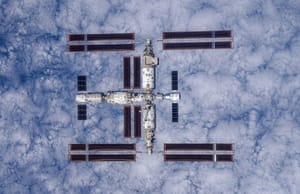
Jan 27, 2024
China's Tiangong Space Station passes 1000 days in space!
Disclaimer: This article may take a while to load as where possible a relevant image is used.
As of the 24th of January 2024, China's Tiangong Space Station has surpassed one-thousand days in space! The space station was constructed in three launches, starting in late April of 2021. To date, the space station has been visited by six crews and six cargo spacecraft.
The Tiangong Space Station, also called the Chinese Space Station, is a permanently crewed space station in low Earth orbit operated by the China Manned Space Agency and China National Space Administration. The space station consists of the Tianhe core module, the Wentian laboratory module, and the Mengtian laboratory module. The station has three docking ports for visiting spacecraft to dock located on the Tianhe module, one port is located at the aft end of the module, and two and the forward end with one facing Earth.
To celebrate the one-thousand days in space this article will go over what each module is, the missions to the space station, and its future. So let's begin!
What's Tianhe?
The Tianhe module is the core of the Tiangong Space Station and was the first of the three modules to be launched. Tianhe was launched on the 29th of April atop of a Long March 5B from the Wenchang Space Launch Site.
Tianhe has a length of 16.6 meters and is 4.2 meters wide at its largest part, the module is believed to weigh 22,500 kilograms. The module features two large solar arrays, to generate electrical power, a robotic arm, to move experiments and taikonauts, five docking ports for spacecraft, two are permanently occupied by Wentian and Mengtian, as well as an airlock, to allow crews to perform spacewalks.
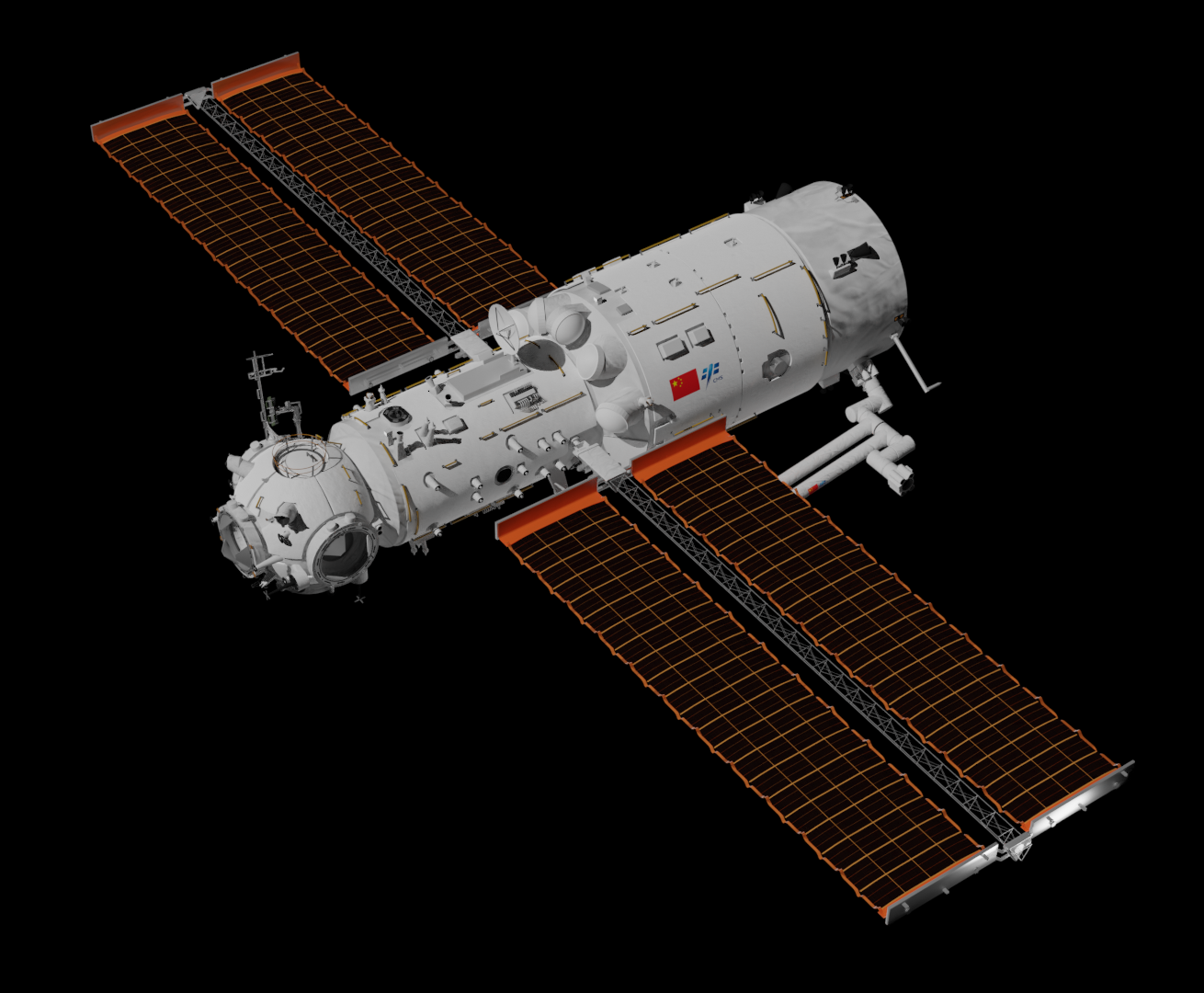
Inside the habitable 51 cubic meters of Tianhe, the module has living quarters for the crew, storage spaces, communications equipment, and fire control equipment. The total pressurized volume of Tianhe is believed to be 113 cubic meters.
To slow down Tiangong's orbital decay, Tianhe is fitted with four Hall effect ion thrusters to perform orbit-raising manoevours. The fuel for the ion thrusters is resupplied by visiting Tianzhou spacecraft.
What's Wentian?
The Wentian module is a laboratory and cabin module as part of the Tiangong Space Station and was the second of the three modules to be launched. Wentian was launched on the 24th of July 2022 atop of a Long March 5B from the Wenchang Space Launch Site.
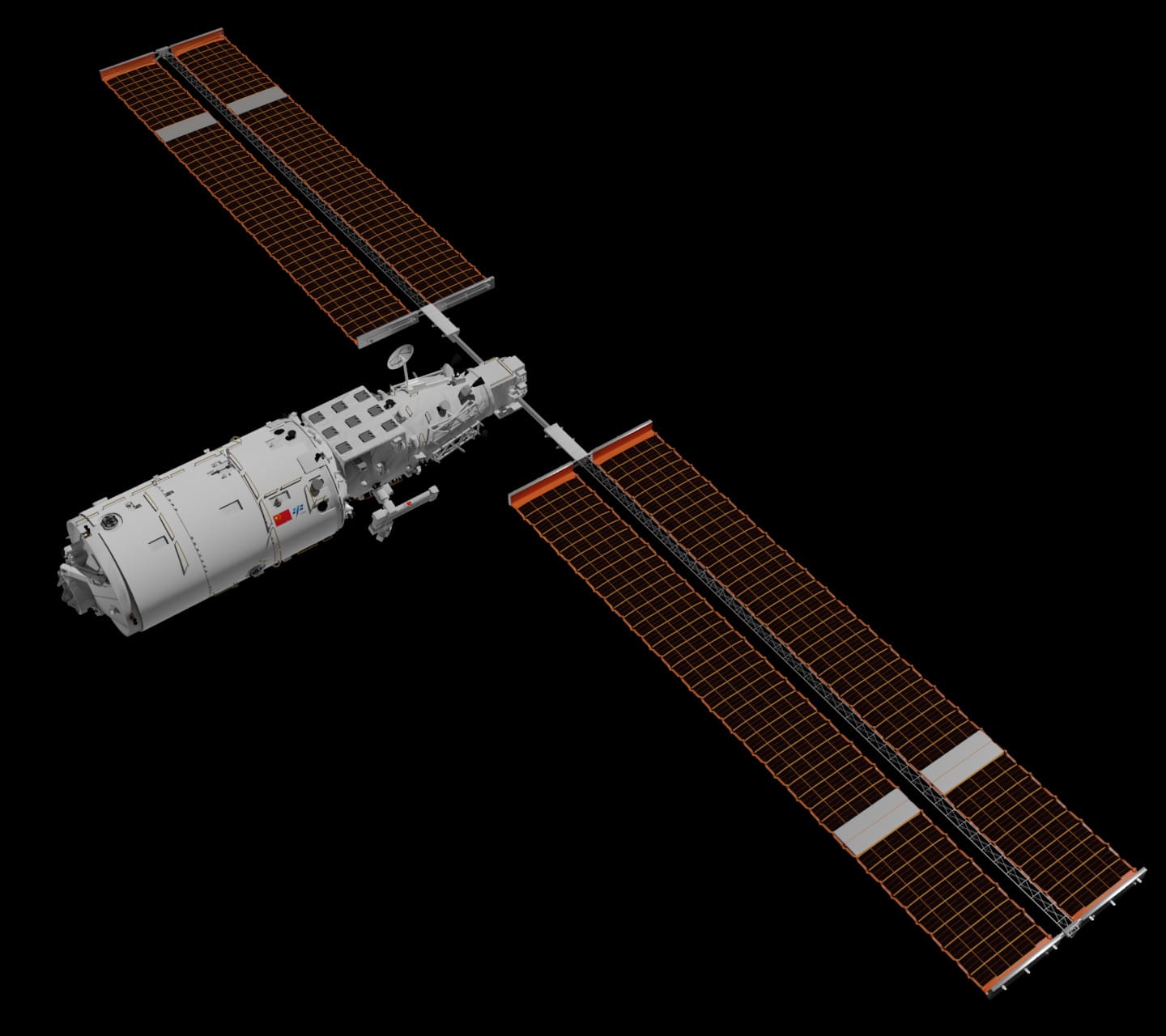
Wentian has a length of 17.9 meters and is 4.2 meters wide at its largest part, the module is believed to weigh 22,000 kilograms. The module features two massive solar arrays to generate electrical power. The module can also serve as a backup of Tianhe.
Wentian has 39 cubic meters of habitable volume with the module being used for hosting microgravity experiments, microgravity is commonly called zero gravity. The Wentian module also has an airlock, which is larger than the one in the Tianhe module, to perform spacewalks outside of the station. Wentian's airlock has become the primary airlock on the Tiangong Space Station since the Shenzhou 14 mission. The pressurized volume of Wentian is 118 cubic meters.
What's Mengtian?
The Mengtian module is a laboratory and cabin module as part of the Tiangong Space Station and was the last of the three modules to be launched. Mengtian was launched on the 31st of October 2022 atop of a Long March 5B from the Wenchang Space Launch Site.
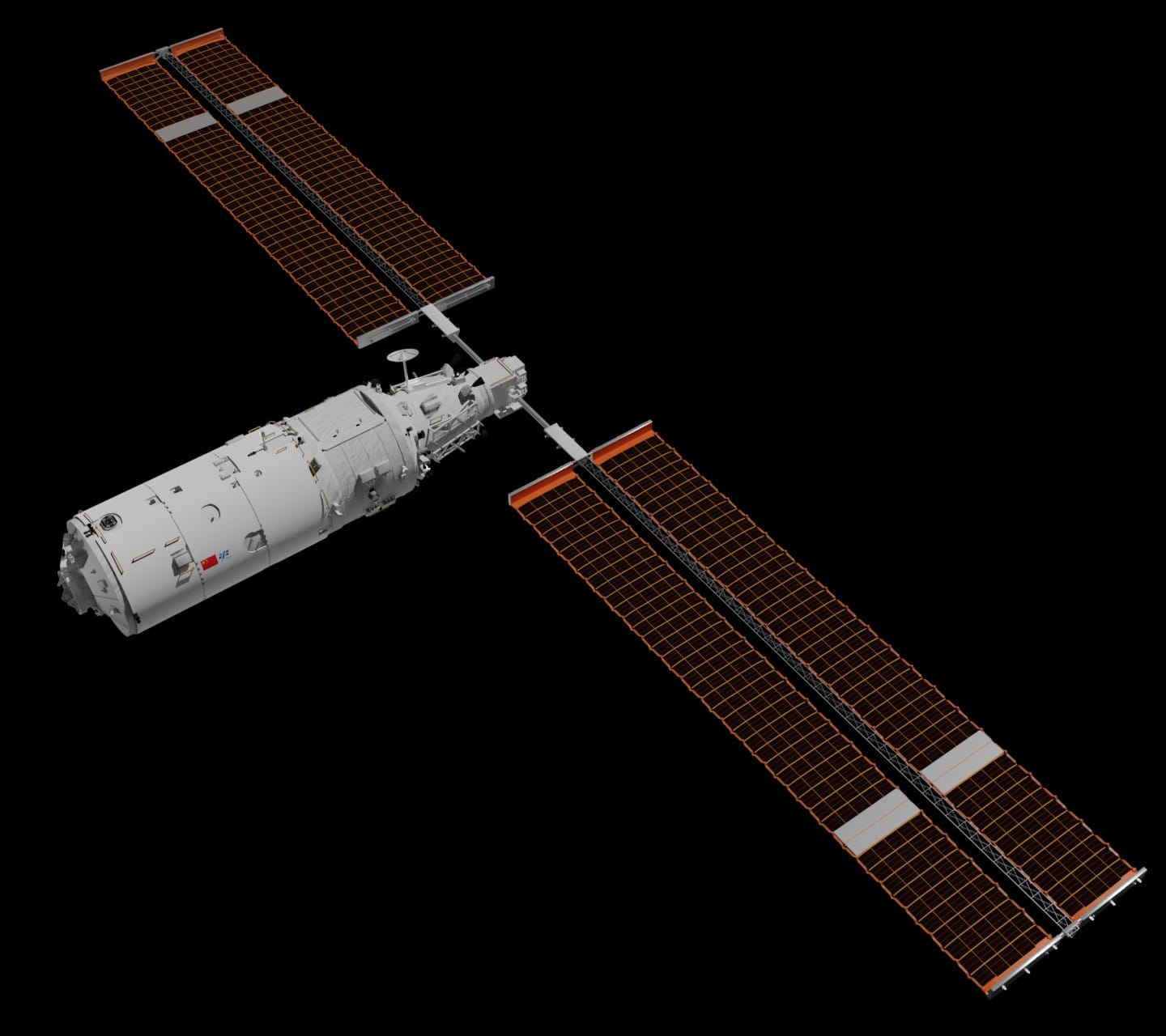
Similarly to Wentian, Mengtian has a length of 17.9 meters and is 4.2 meters wide at its largest part, the module is believed to weigh 22,000 kilograms. The module also features two massive solar arrays to generate electrical power.
Mengtian has 32 cubic meters of habitable volume with the module being used for hosting microgravity experiments, similar to Wentian. Mengtian also has a materials airlock to expose science experiments to the space environment. The pressurized volume of Mengtian is 109 cubic meters.
What's visited the Tiangong Space Station?
The first spacecraft to visit China's space station was the Tianzhou-2 cargo spacecraft, which launched and docked on the 29th of May 2021, one month into its life on orbit. Tianzhou 2 carried supplies and equipment for the first crew aboard the space station and conducted propellant transfer testing with Tianhe. The spacecraft would spend almost ten months docked to the space station before ending its mission on the 31st of March 2022.
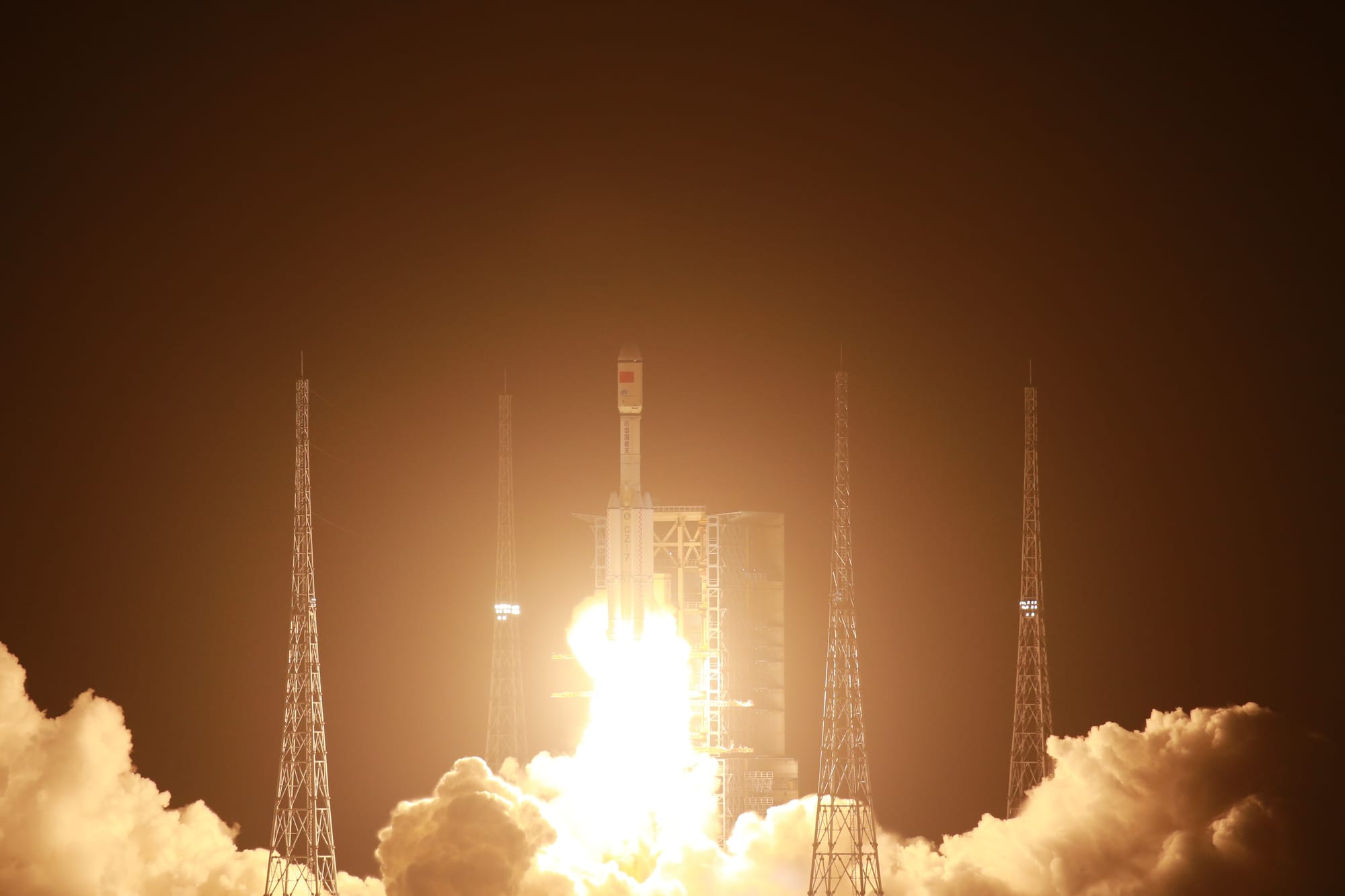
The first taikonauts to enter the Tiangong Space Station were the crew of the Shenzhou-12 spacecraft. They were Nie Haisheng, Liu Boming, and Tang Hongbo who entered the station on the 17th of June 2021. The crew would spend ninety-one days onboard and conduct two spacewalks to test the Feitian space suit and outfit the Tianhe module with equipment from inside the module. The three taikonauts would leave the station uncrewed on the 16th of September 2021 and return to Earth a day later.
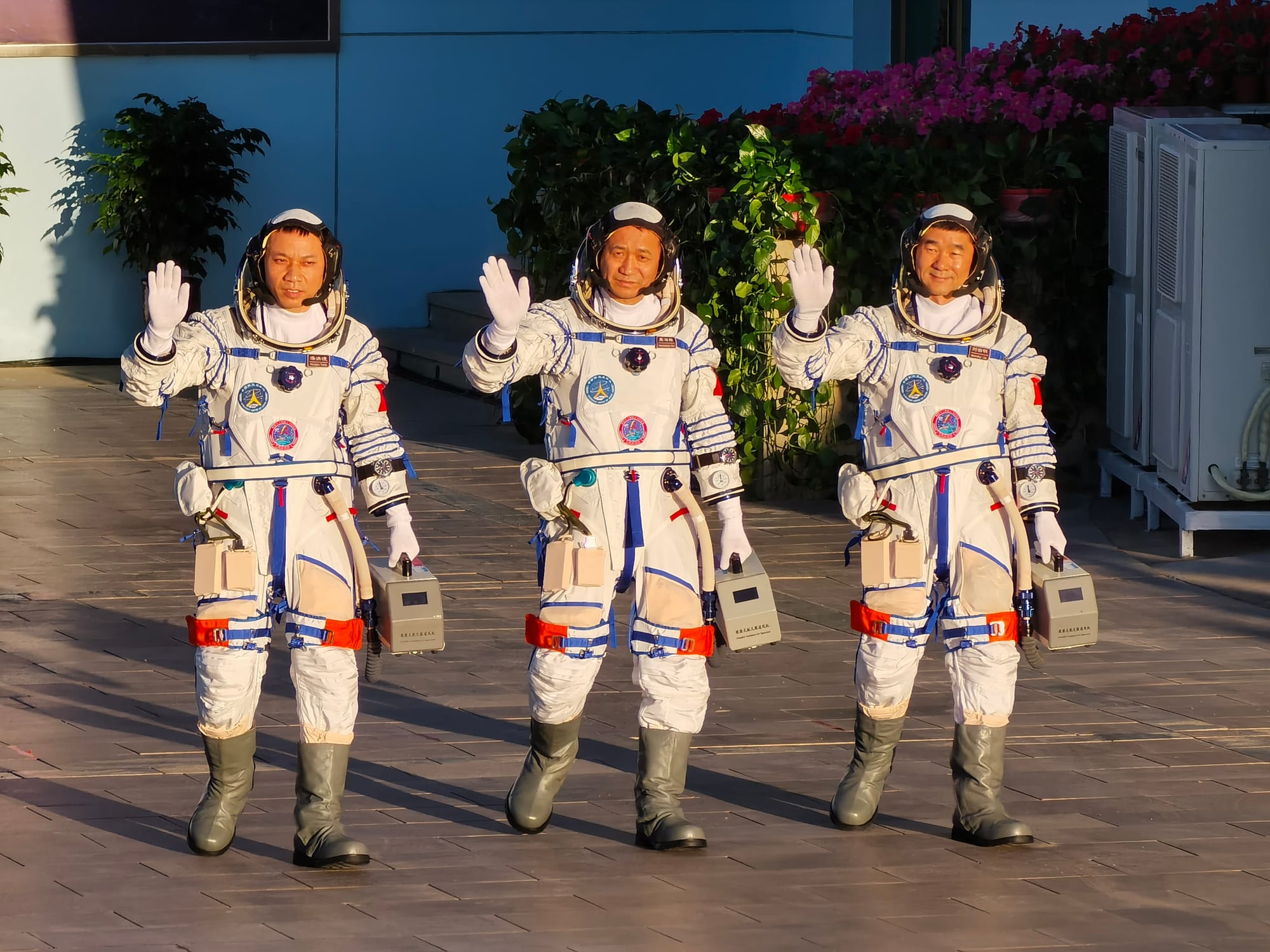
The third spacecraft to visit the space station was the Tianzhou-3 cargo spacecraft, which arrived on the 20th of September 2021. Tianzhou-3 brought approximately six tons of supplies to the station for the Shenzhou-13 crew as it arrived a few days after Shenzhou-12 had returned to Earth. Similar to the previous cargo mission, Tianzhou-3 would spend almost ten months docked to the station and would end its mission on the 27th of July 2022.
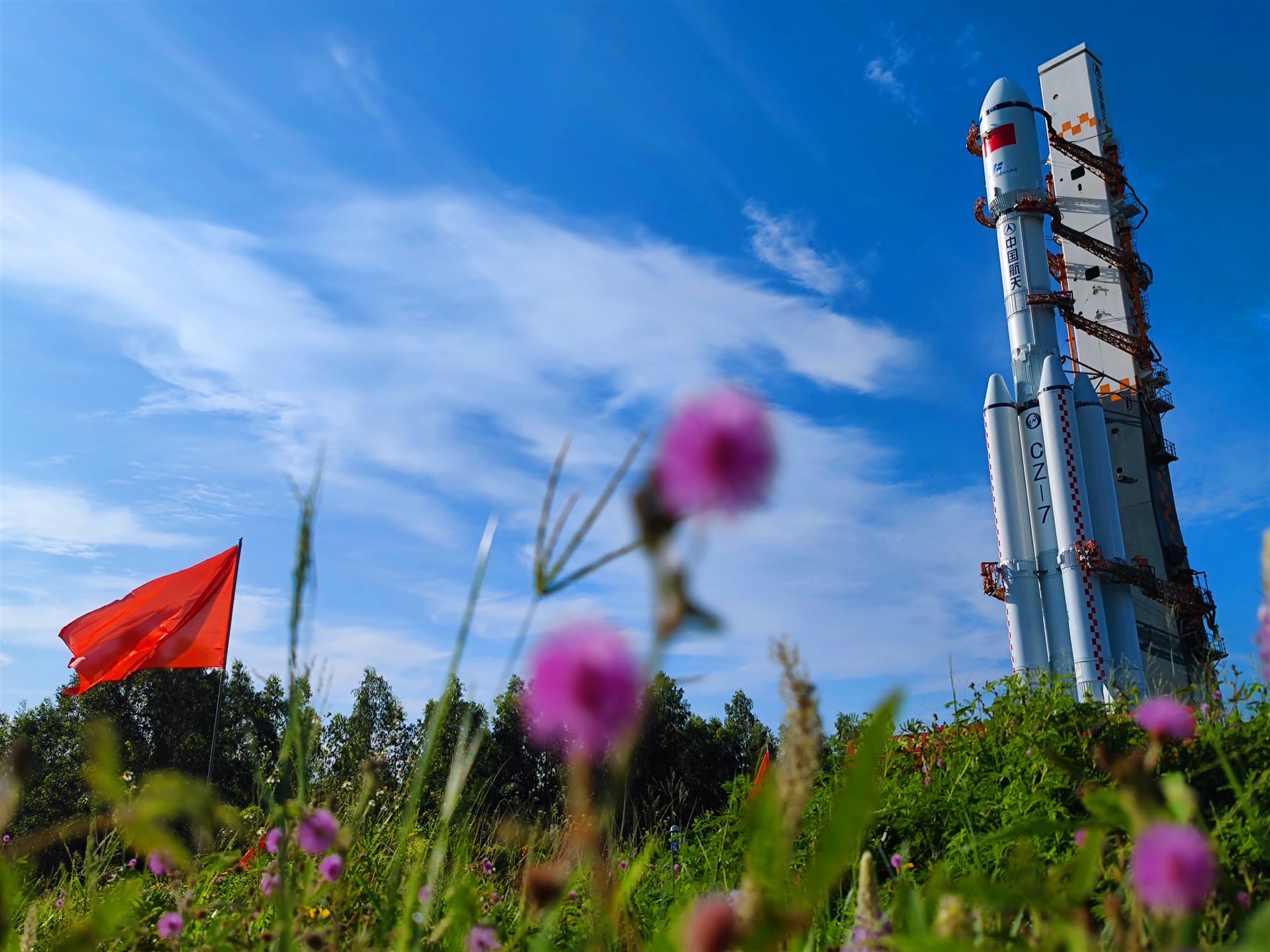
The next taikonauts to enter China's space station would be Zhai Zhigang, Ye Guangfu, and Wang Yaping of the Shenzhou-13 mission on the 15th of October 2021. The crew of Shenzhou-13 would be the first to spend six months onboard the Tiangong Space Station. During the six months onboard the crew would perform two spacewalks, the first of which made Wang Yaping the first woman from China to conduct a spacewalk! The crew would leave the station uncrewed for the final time on the 15th of April 2022 and would safely return to Earth a day later.
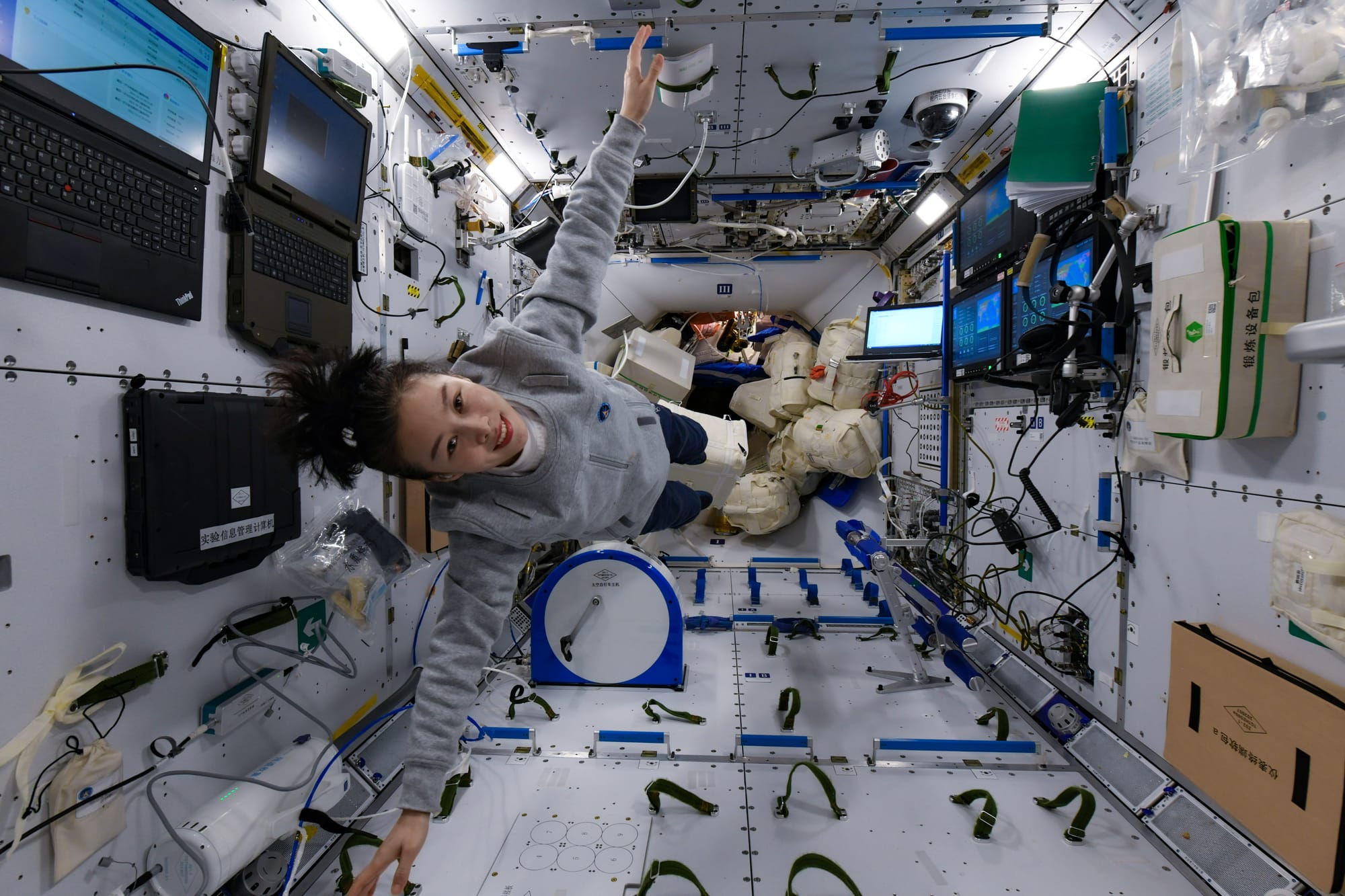
The fifth spacecraft to visit Tiangong was Tianzhou-4, which launched on the 9th of May 2022 and docked the following day, carrying a believed 6,000 kilograms of supplies for the crew of Shenzhou-14 as well as equipment for the upcoming Wentian and Mengtian modules. Tianzhou-4 also carried the Zhixing-3A CubeSat onboard which was deployed from the spacecraft on the 13th of November 2022. The spacecraft would be docked to Tiangong for almost six months and would end its mission on the 14th of November 2022.
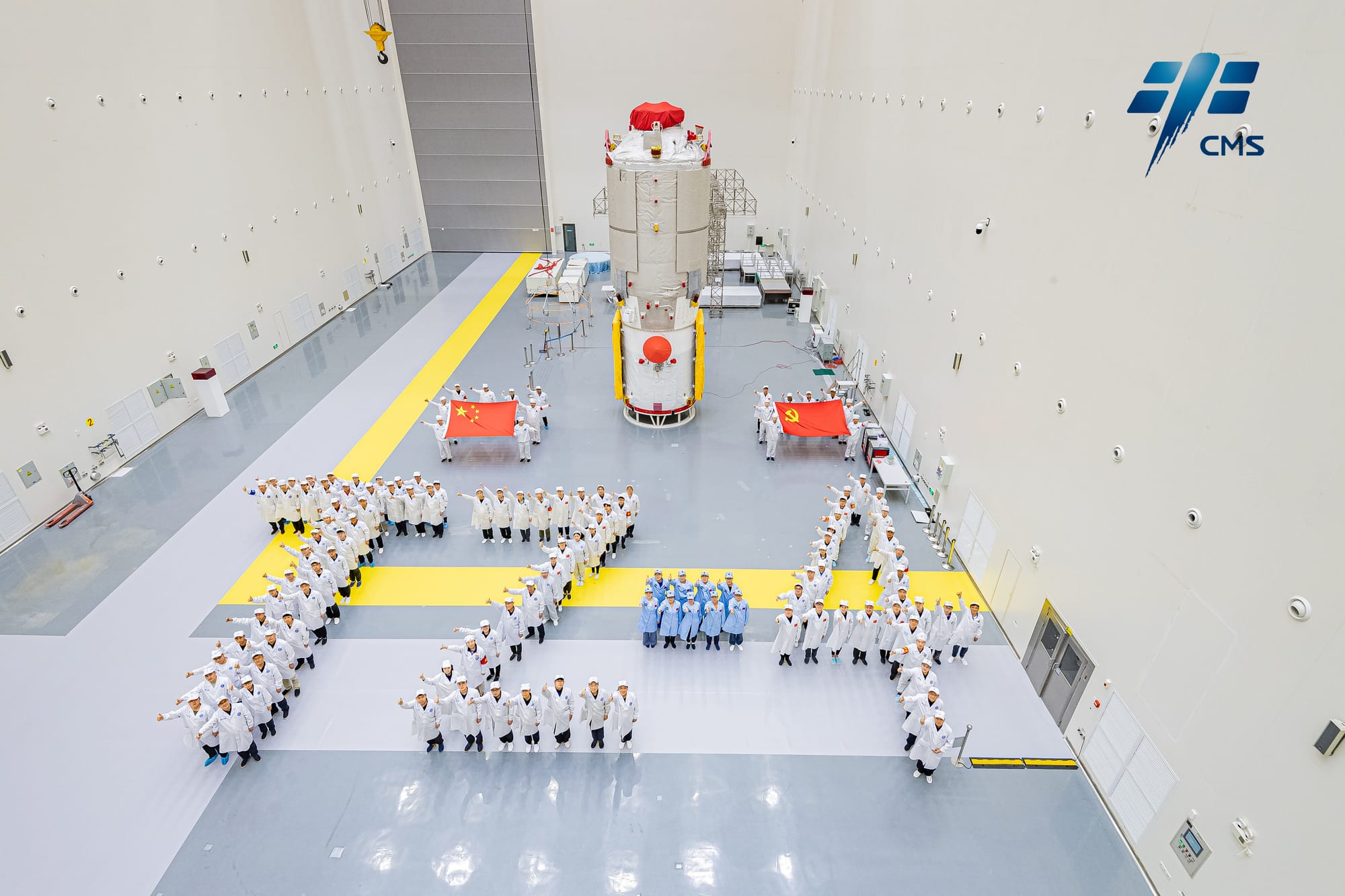
Tiangong would begin permanent crewed operations beginning with the arrival of the Shenzhou-14 crew on the 5th of June 2022. The three taikonauts of Shenzhou-14 were Chen Dong, Liu Yang, and Cai Xuzhe spending six months aboard and overseeing the arrival of the Wentian and Mengtian modules. The crew would conduct three spacewalks to install equipment across all three modules and verify emergency rescue procedures for spacewalks. The Shenzhou-14 mission would end on the 4th of December 2022 when the crew returned to Earth. Before the Shenzhou-14 crew left the Shenzhou-15 crew arrived on the 29th of November 2022.
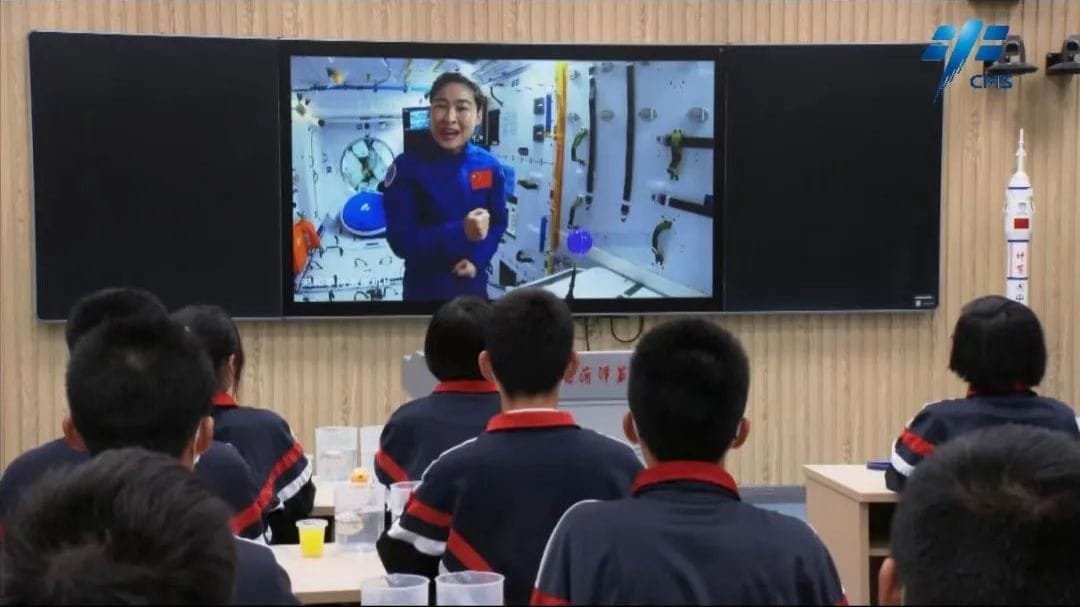
The Wentian laboratory and cabin module would arrive at the Tiangong Space Station on the 24th of July 2022 for a permanent stay. The module was launched on the same day atop of a Long March 5B.
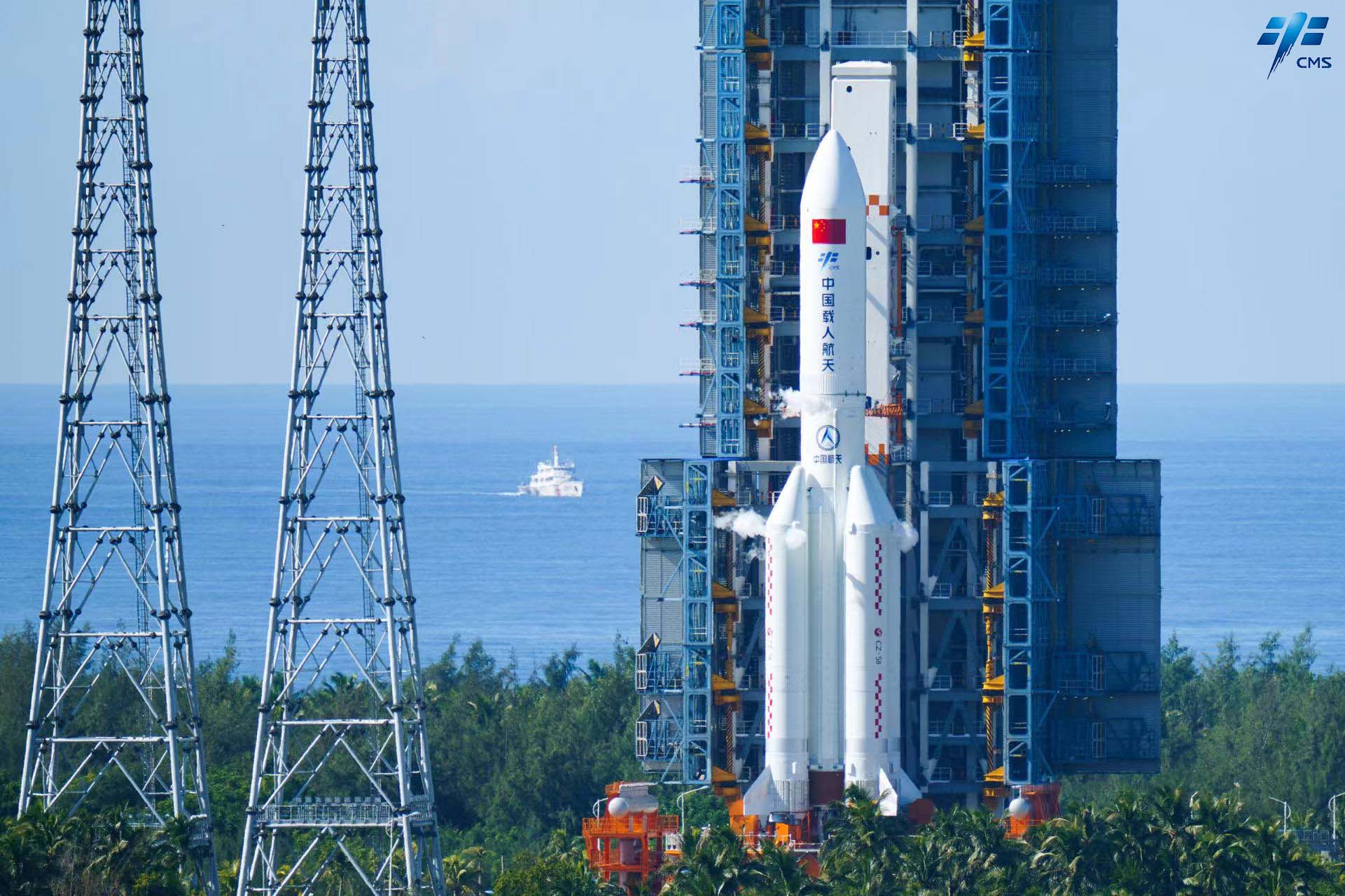
A little over three months after Wentian, the Mengtian laboratory and cabin module would arrive at the space station on the 31st of October 2022. The module was launched on the same day atop of a Long March 5B.

The seventh spacecraft to visit the Tiangong Space Station was the Tianzhou-5 cargo spacecraft, which launched and docked on the 12th of November 2022. Tianzhou-5 was carrying supplies for the permanent crew operations and performed the fastest rendezvous and docking ever, doing so in just two hours and seven minutes. The spacecraft would spend almost ten months at the station and ended its mission on the 12th of September 2023.
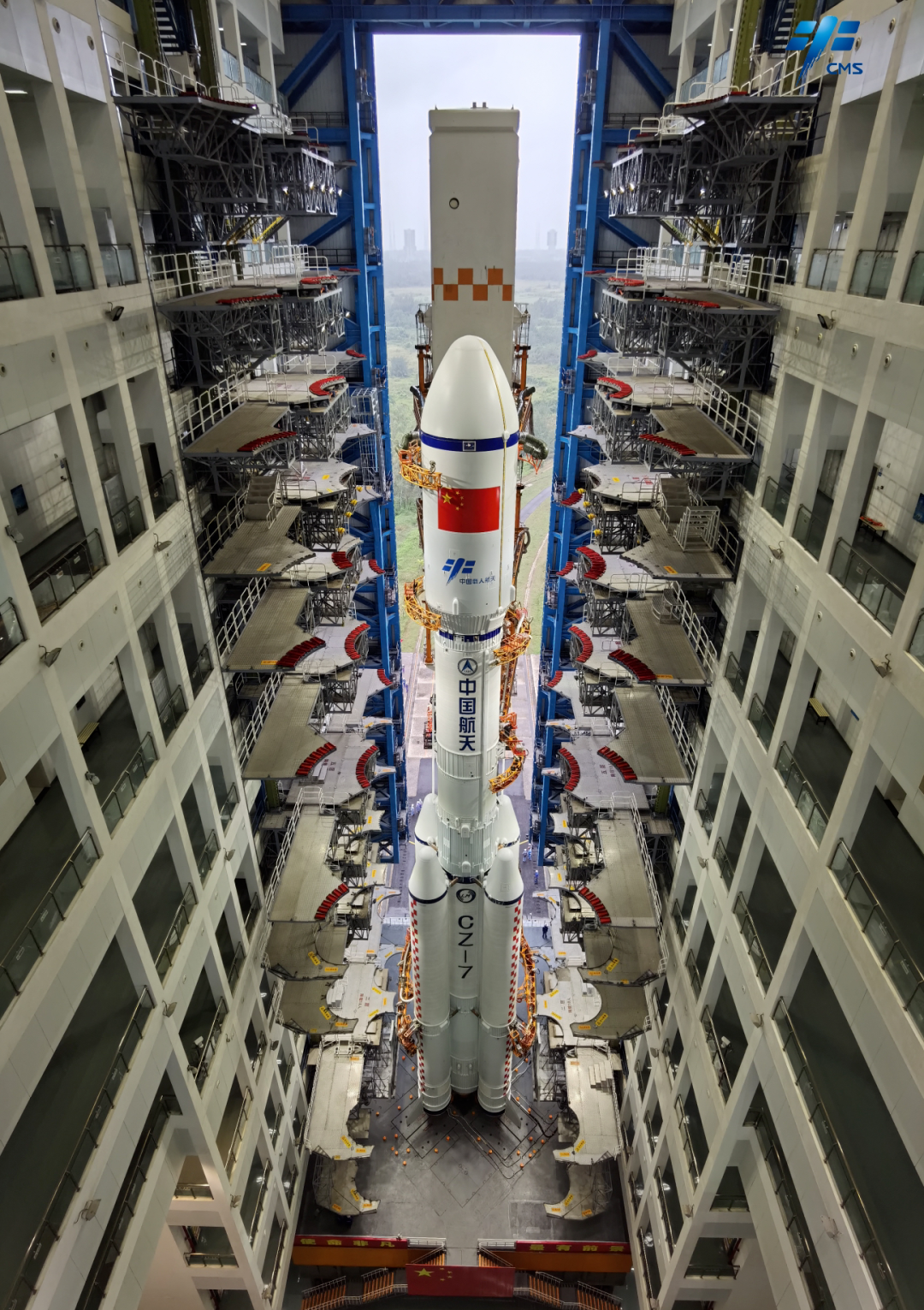
Shenzhou-15 would launch to the space station on the 29th of November 2022 and would arrive on the same day. For the first time in Tiangong's life on orbit, a prior crew would greet an incoming crew with Fei Junlong, Deng Qingming, and Zhang Lu being greeted by the crew of Shenzhou-14. The crew of Shenzhou-15 would become the third crew to spend six months aboard the space station and would perform a total of four spacewalks. The crew of Shenzhou-15 would leave the space station would return to Earth on the 3rd of June 2023 after welcoming the incoming Shenzhou-16 crew.
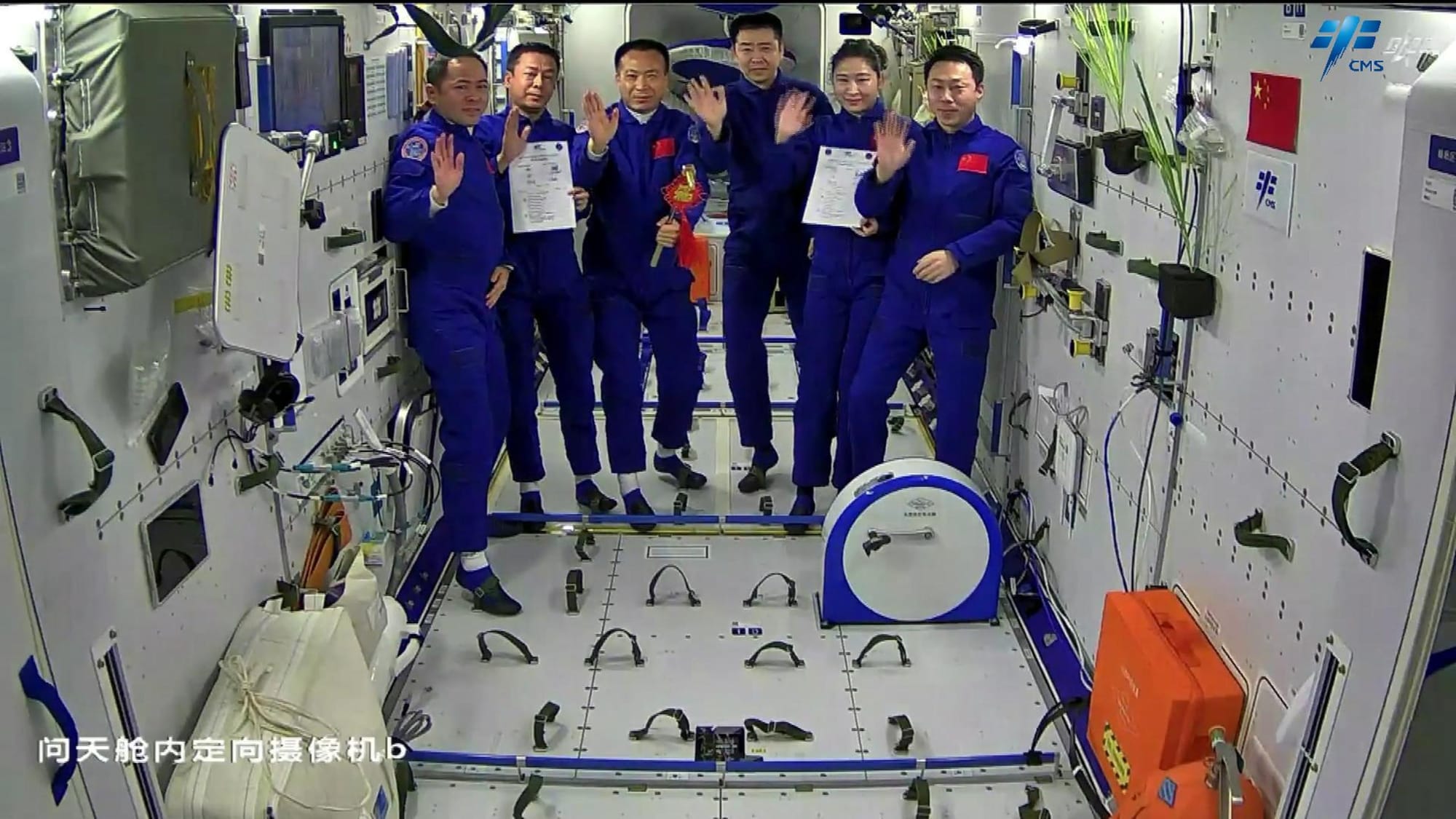
Tianzhou-6 became the ninth spacecraft to visit Tiangong on the 10th of May 2023, after launching on the same day. The spacecraft carried over seven tons of supplies for the crew, including science experiments and fruit! The Tianzhou-6 spacecraft would spend over eight months docked to the station before undocking on the 12th of January 2024, the spacecraft would end its mission on the 19th of January 2024.
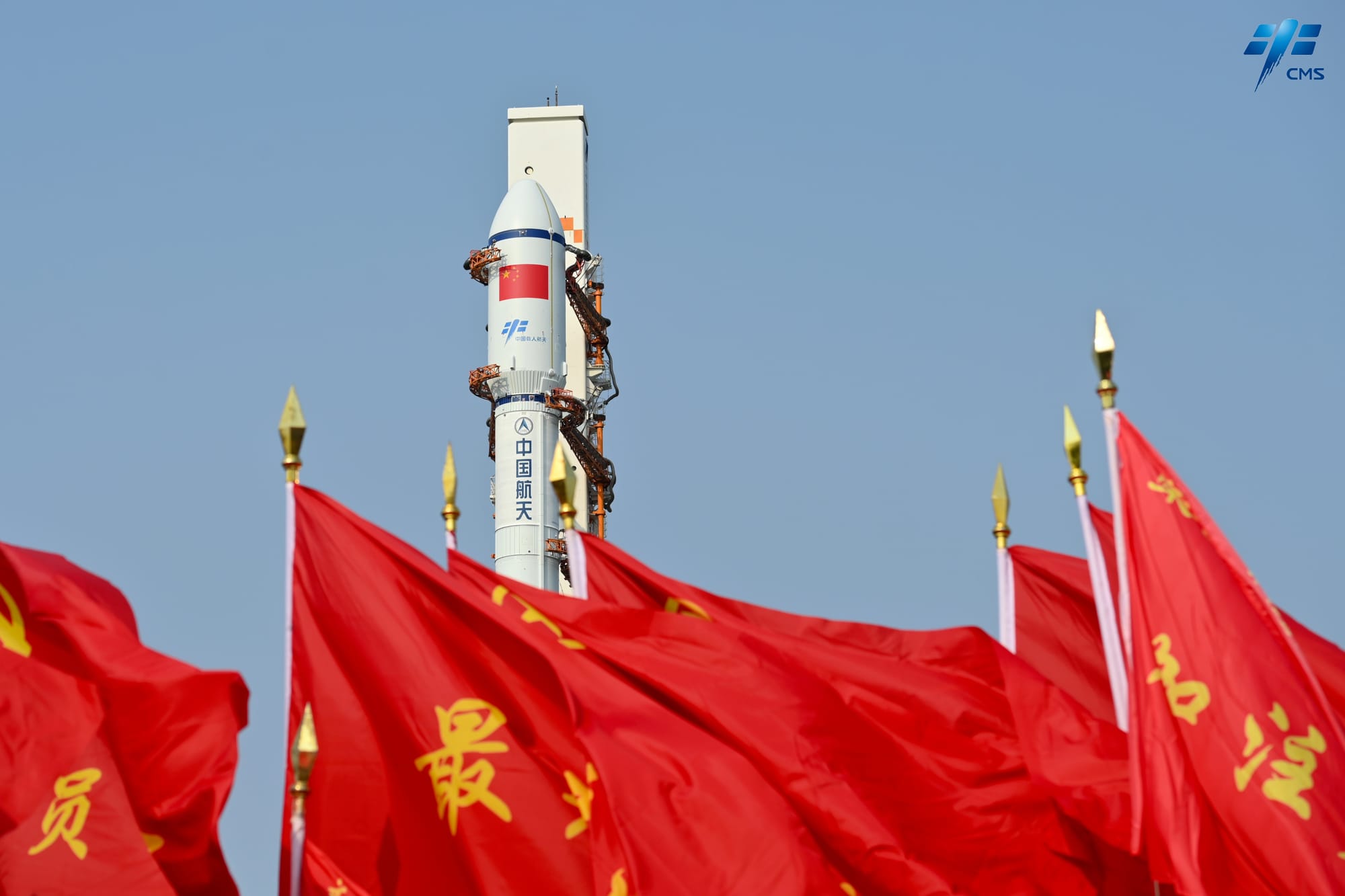
Jing Haipeng, Zhue Yangzhu, and Gui Haichao would launch to the Tiangong Space Station as part of the Shenzhou-16 mission on the 30th of May 2023, and would dock on the same day. Shenzhou-16 had the first Chinese civilian to fly on a space mission with payload specialist Gui Haichao, who is an associate professor at Beihang University. The crew also performed a spacewalk during their five-month stay onboard the space station. The crew would greet the incoming Shenzhou-17 crew on the 26th of October before returning to Earth on the 31st of October, having left the space station the day before.
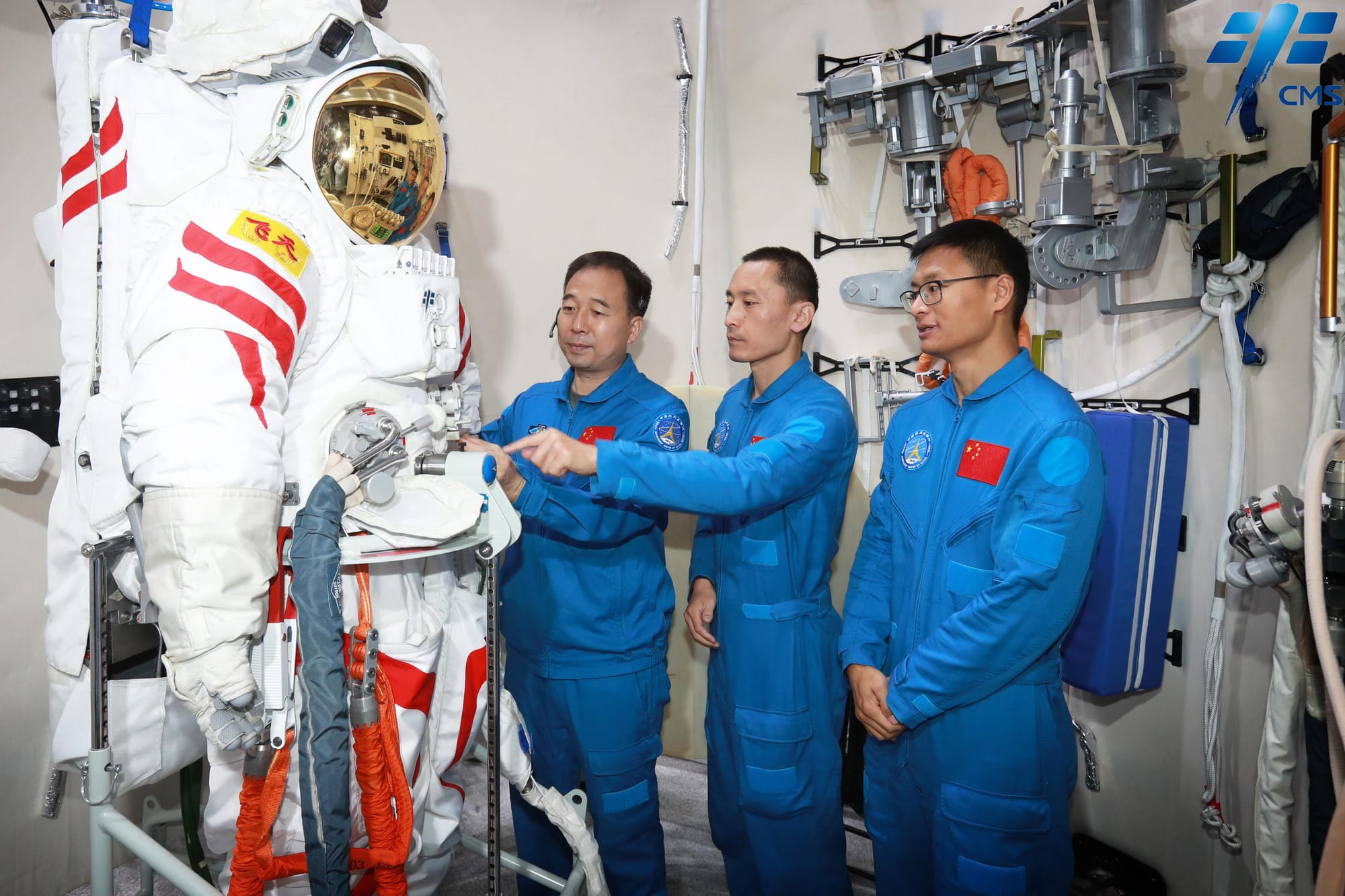
The Shenzhou-17 spacecraft would be the next to visit the space station carrying Tang Hongbo, Tang Shengjie, and Jiang Xinlin onboard. Shenzhou-17 launched on the 26th of October 2023 and docked a little over six hours later. So far the crew has performed one spacewalk during the mission. This mission is still ongoing currently and is planned to end in May of 2024.
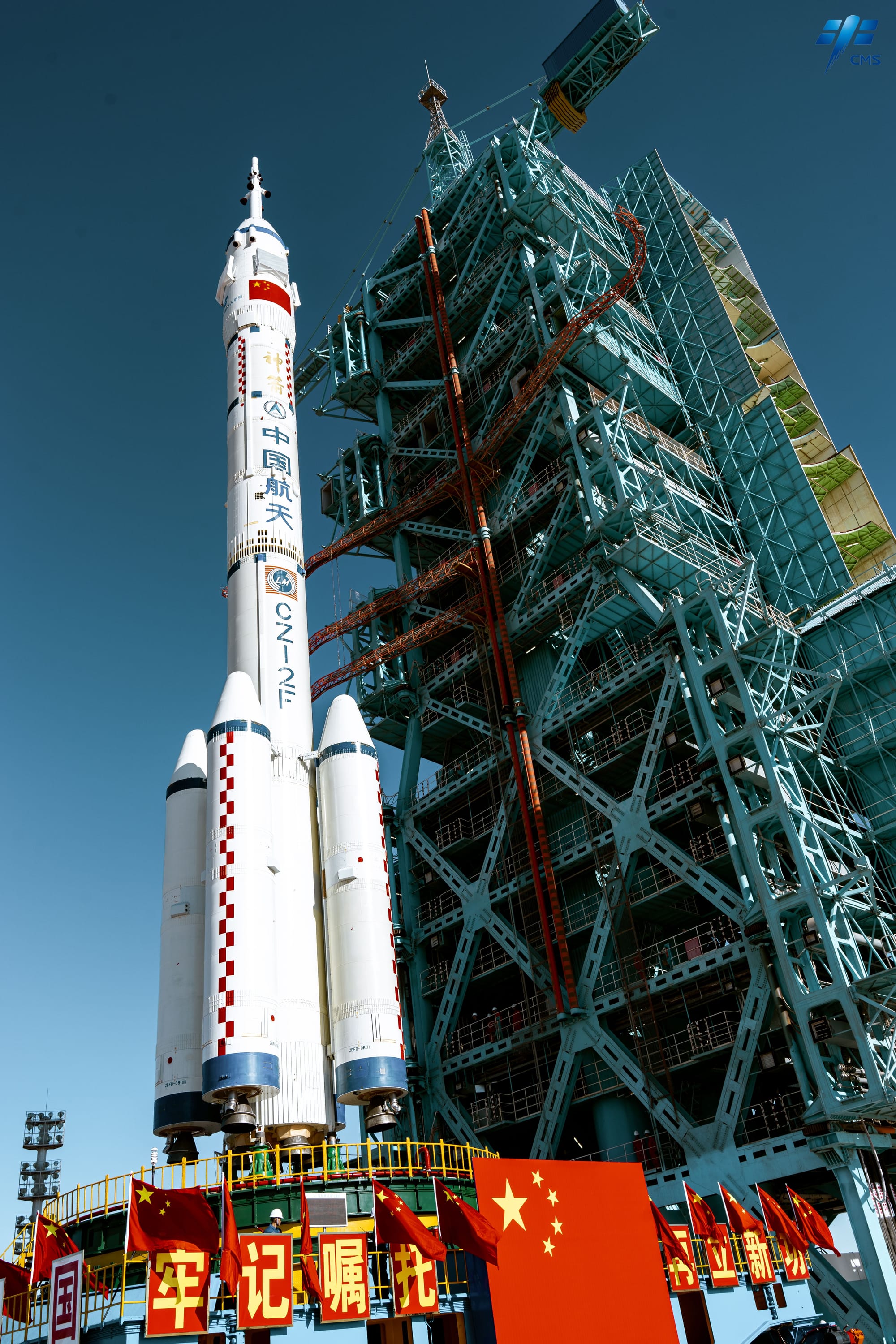
The most recent visitor to the Tiangong Space Station is the Tianzhou-7 cargo spacecraft which launched on the 17th of January 2024 and docked on the same day. Tianzhou-7 is carrying supplies, clothing, and food to the space station to support the Shenzhou 17 and Shenzhou 18 missions. Also onboard the cargo spacecraft is 90 kilograms of fresh fruit for the crew. The end of the Tianzhou-7 mission is currently unknown outside of the China Manned Space Agency.
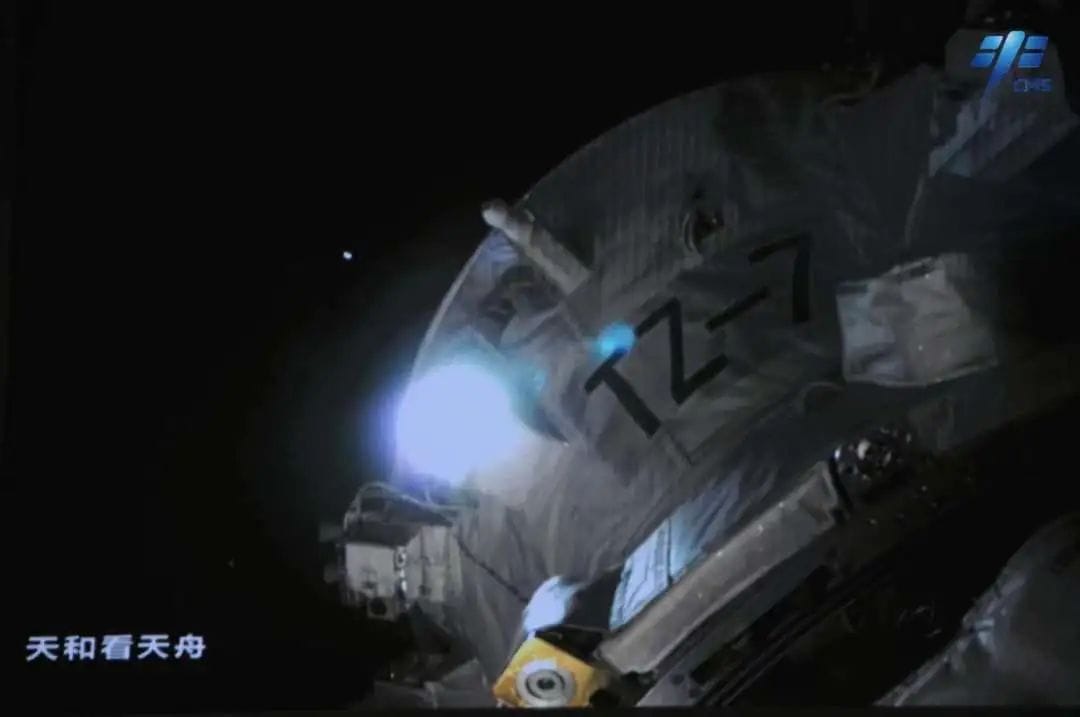
What's the future of the space station?
The China Manned Space Agency is planning to launch Shenzhou-18 in April of 2024. The taikonauts for the mission have not yet been announced but are believed to be in training currently.
Shenzhou-19 is also planned for this year with the launch expected towards the end of 2024. It is believed that the Shenzhou-19 crew is also in training as they will serve as the backup crew for Shenzhou-18.
Tianzhou-8 is believed to be launching later in 2024 to keep up with the desired cadence of three launches over a two-year period.
In 2025 the China National Space Administration wants to launch the Xuntian space telescope to co-orbit with the Tiangong Space Station. The telescope would dock occasionally with the space station for servicing by taikonauts onboard. Xuntian is currently being built by China Aerospace Science and Technology Corporation, also called CASC, for launch atop of a Long March 5B from the Wenchang Space Launce Site.
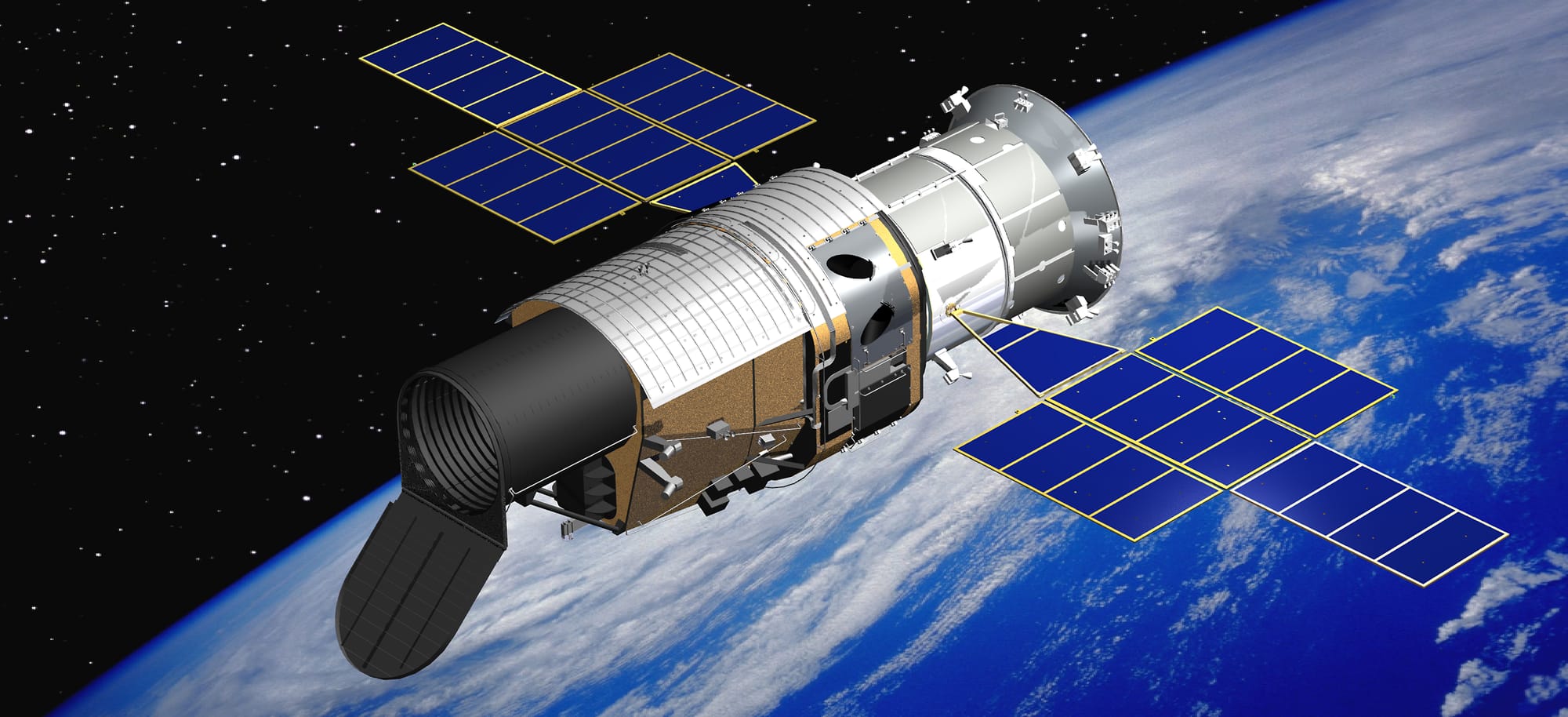
The China Academy of Space Technology, also called CAST, and the China Manned Space Agency have said the space station will be expanded in the future to potentially six modules. The expansion would feature improved versions of Wentian and Mengtian as well as a module with six docking ports that would attach to the forward-facing port on Tianhe. The launch of new modules could also include more solar panels to be placed alongside the existing ones.
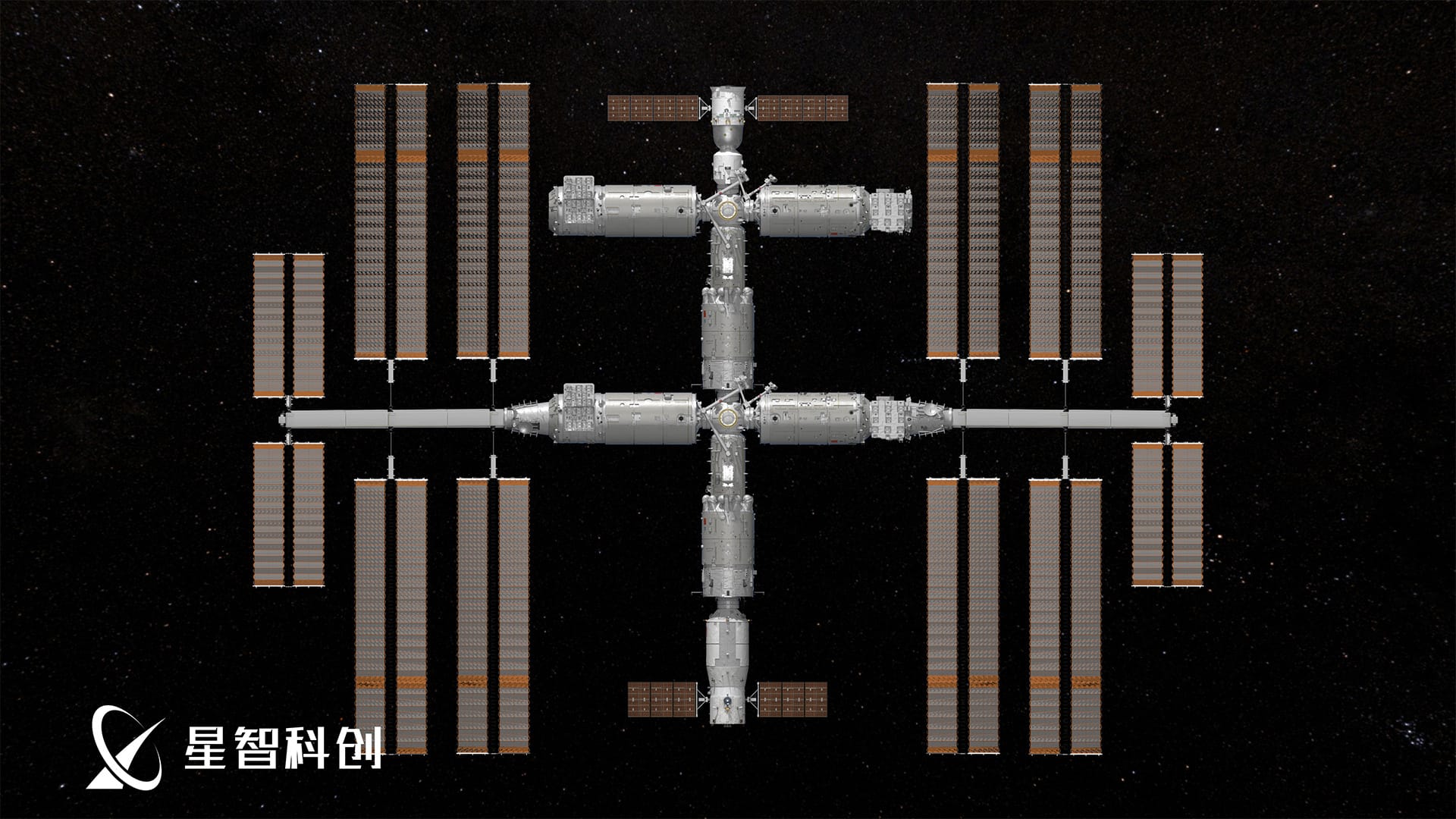
Some explanations of terms used
This article has used Shenzhou, Tianzhou, and taikonaut lots with no prior explanation so this section serves as an explainer.
What is Shenzhou?
Shenzhou refers to both China's crewed space missions and the Shenzhou spacecraft. To date eighteen Shenzhou missions have flown.
The Shenzhou spacecraft is China’s only operational crewed spacecraft and is currently used to ferry its crews to and from the Tiangong space station. The spacecraft has a pressurized volume of almost fifteen cubic meters with a habitable volume of seven cubic meters. Currently, the Shenzhou spacecraft has a crew capacity of three.
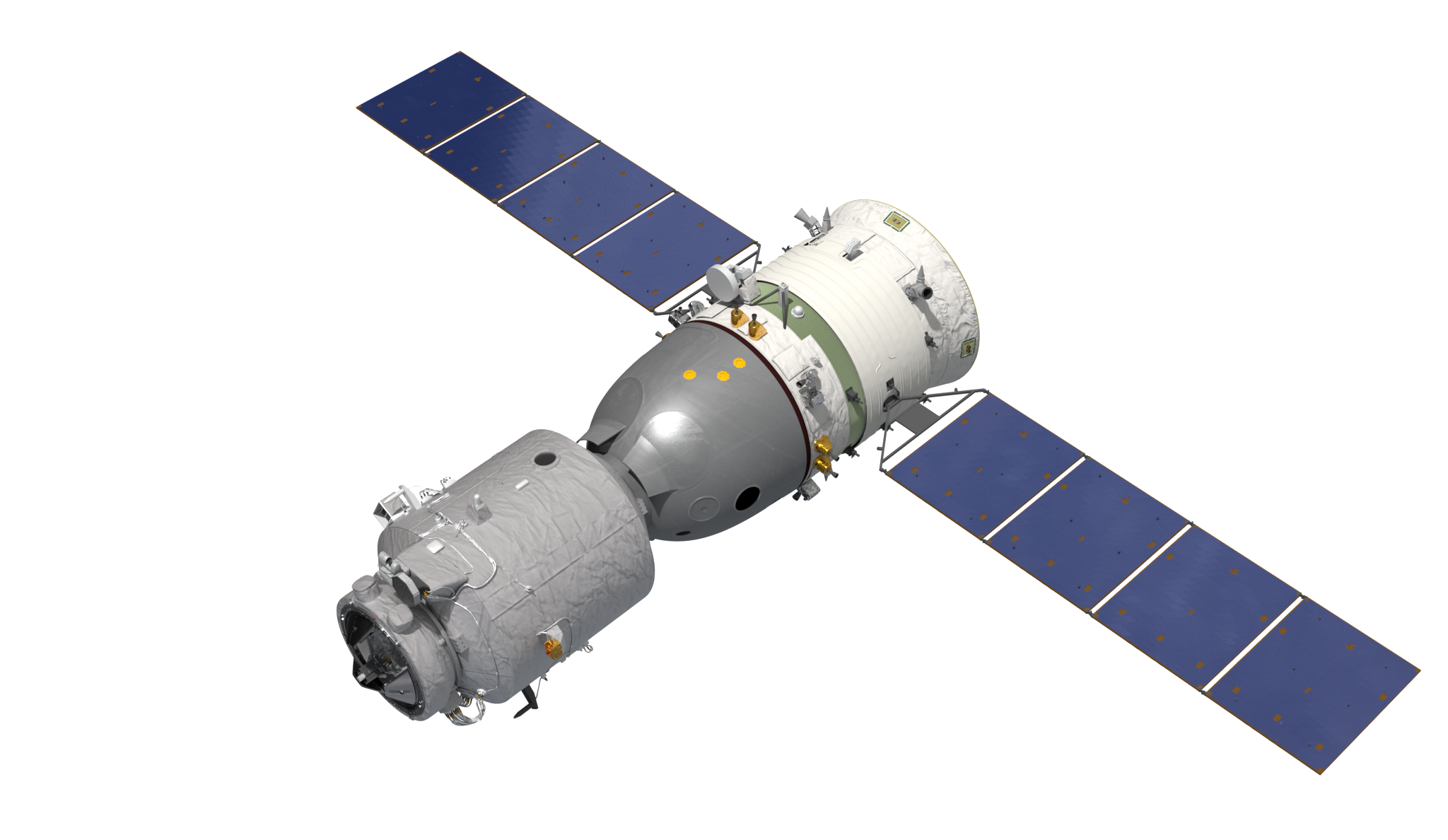
Shenzhou consists of a service module, a re-entry module, and an orbital module. During launch and return to Earth the crew are in the re-entry module which is the only part of the spacecraft that survives re-entry into Earth's atmosphere. The service module houses the main engines for the spacecraft as well as the two solar panels to generate power for the spacecraft. The orbital module houses the docking mechanism for the spacecraft and gives the crew additional room inside as well as space for cargo.
The Shenzhou spacecraft currently launches on the Long March 2F rocket from the Jiuquan Satellite Launch Center.
What are taikonauts?
The word taikonaut has been used lots in this article so a small explanation of the word is necessary. Taikonaut is what China calls its astronauts, such as the country's first taikonaut Yang Liwei who flew into space in 2003.
The word comes from a combination of the Chinese word for outer space, taikong, and the suffix, naut.
To date, China has flown twenty taikonauts to space, eighteen men and two women, across twelve missions.
What is Tianzhou?
Tianzhou refers to both China's cargo resupply missions and the Tianzhou spacecraft. There have been seven Tianzhou spacecraft launched so far.
The Tianzhou spacecraft is an uncrewed cargo spacecraft developed by China to resupply the Tiangong space station. Tianzhou is derived from China’s first space stations, Tiangong-1 and Tiangong-2, and is capable of delivering 7,400 kilograms of cargo to their space station and weighs 14,000 kilograms.
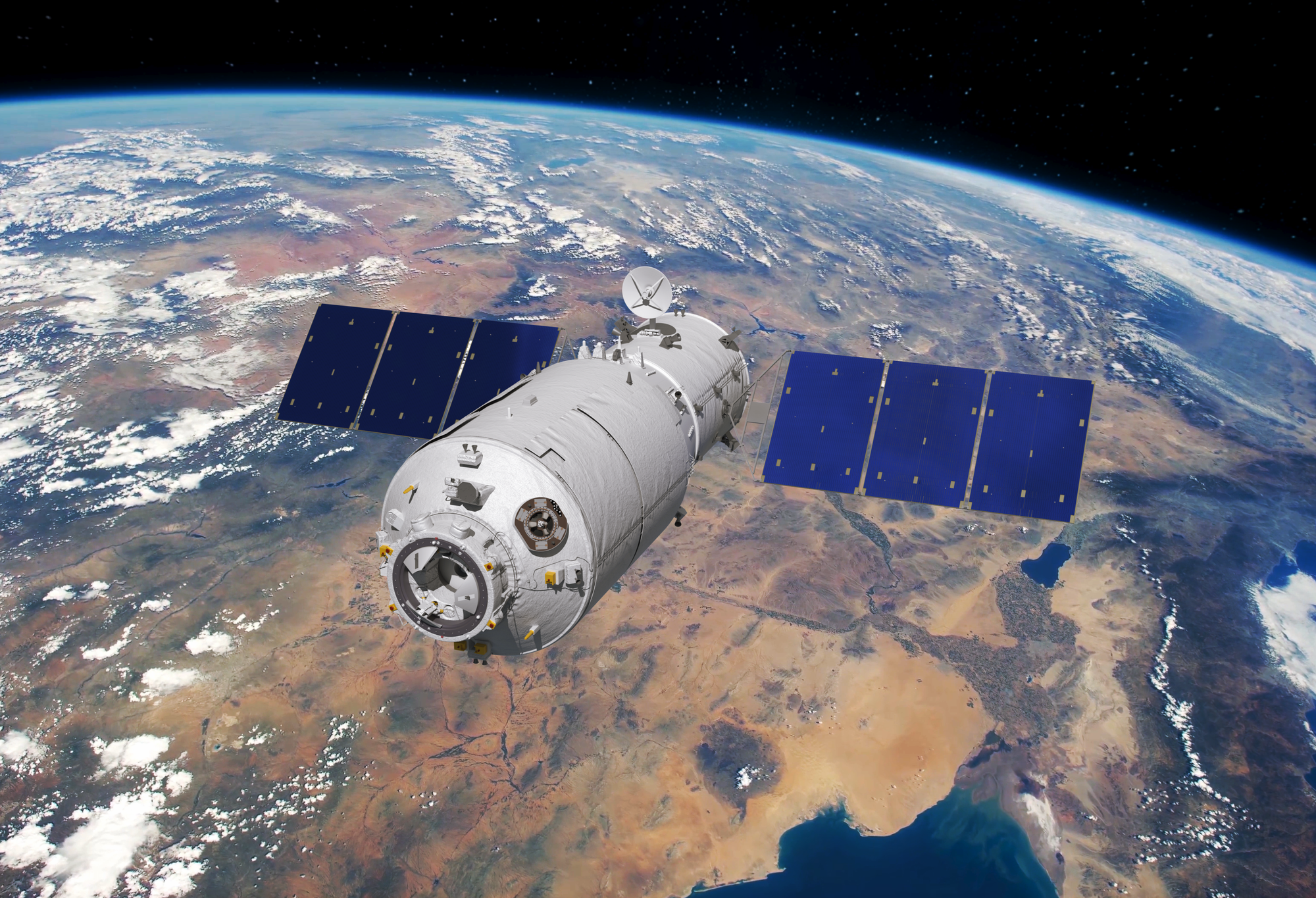
The spacecraft does not possess any way to return cargo back down to Earth and is destroyed on re-entry. Tianzhou is also capable of transporting pressurized, semi-pressurized, and un-pressurized cargo. Current versions of the spacecraft are powered by two panels to generate power for the spacecraft.
So far all Tianzhou spacecraft have been launched on the Long March 7 rocket from the Wenchang Space Launch Site.



